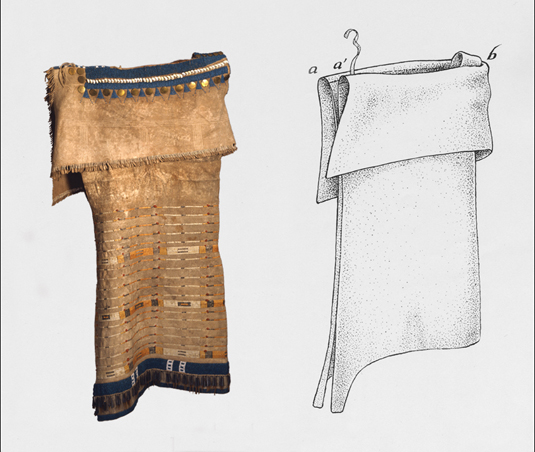I found this article on an obscure Peopody museum site:
Glass Beads
Glass beads were one of the most successful European exports during the Age of Expansion (1600–1850). Women appreciated their ready-made beauty, and a huge demand for glass beads developed in Africa and North America, where they replaced beads that were handmade from bone, shell, and stone. Meriwether Lewis purchased beads of many sizes and colors to use as trade goods on the expedition. However, Lewis and Clark found that Indian people preferred blue and white beads and sometimes rejected other colors. Lewis later told President Jefferson that blue beads were valued as highly as Europeans valued gold, and white beads as highly as silver.
Glass beads were one of the most successful European exports during the Age of Expansion (1600–1850). Women appreciated their ready-made beauty, and a huge demand for glass beads developed in Africa and North America, where they replaced beads that were handmade from bone, shell, and stone. Meriwether Lewis purchased beads of many sizes and colors to use as trade goods on the expedition. However, Lewis and Clark found that Indian people preferred blue and white beads and sometimes rejected other colors. Lewis later told President Jefferson that blue beads were valued as highly as Europeans valued gold, and white beads as highly as silver.
Cowrie Shells
Many cowrie shells were harvested in the Maldive Islands, some 9,000 miles from central North America. African people, many of them slaves, brought cowries to North America, but they were rarely found in the western United States before 1850. These shells may have been imported by the Hudson Bay Company or by another British trade company.
Many cowrie shells were harvested in the Maldive Islands, some 9,000 miles from central North America. African people, many of them slaves, brought cowries to North America, but they were rarely found in the western United States before 1850. These shells may have been imported by the Hudson Bay Company or by another British trade company.
Porcupine Quills
The woman who made this dress covered the surface with rows of dyed porcupine and bird quills. Quillwork is a traditional women’s art practiced from the Eastern Woodlands to the Plains. Working with quills was considered a sacred art in some Plains Indian communities, and the women who did so were members of special societies. Metal Tinklers
The side-fold dress was animated by metal tinkler cones attached at the hem, which sounded a rhythmic jingle when the garment moved. Their presence indicates that the dress was used for dancing. At the time of Lewis and Clark, tinklers were often made from scrap metal recycled from other objects. Indian people regarded metal as one of the most prized trade goods.
The side-fold dress was animated by metal tinkler cones attached at the hem, which sounded a rhythmic jingle when the garment moved. Their presence indicates that the dress was used for dancing. At the time of Lewis and Clark, tinklers were often made from scrap metal recycled from other objects. Indian people regarded metal as one of the most prized trade goods.
Wool Trade Cloth
Small bundles of red wool trade cloth accent the rows of quillwork on the skirt of this dress. European wool cloth was an important international commodity during the eighteenth and nineteenth centuries. It was highly sought in North America, both for domestic use and for the Indian trade. French, English, and Spanish politicians and traders supplied Indian people with wool fabric, most of it dyed red or blue.
Small bundles of red wool trade cloth accent the rows of quillwork on the skirt of this dress. European wool cloth was an important international commodity during the eighteenth and nineteenth centuries. It was highly sought in North America, both for domestic use and for the Indian trade. French, English, and Spanish politicians and traders supplied Indian people with wool fabric, most of it dyed red or blue.







No comments:
Post a Comment